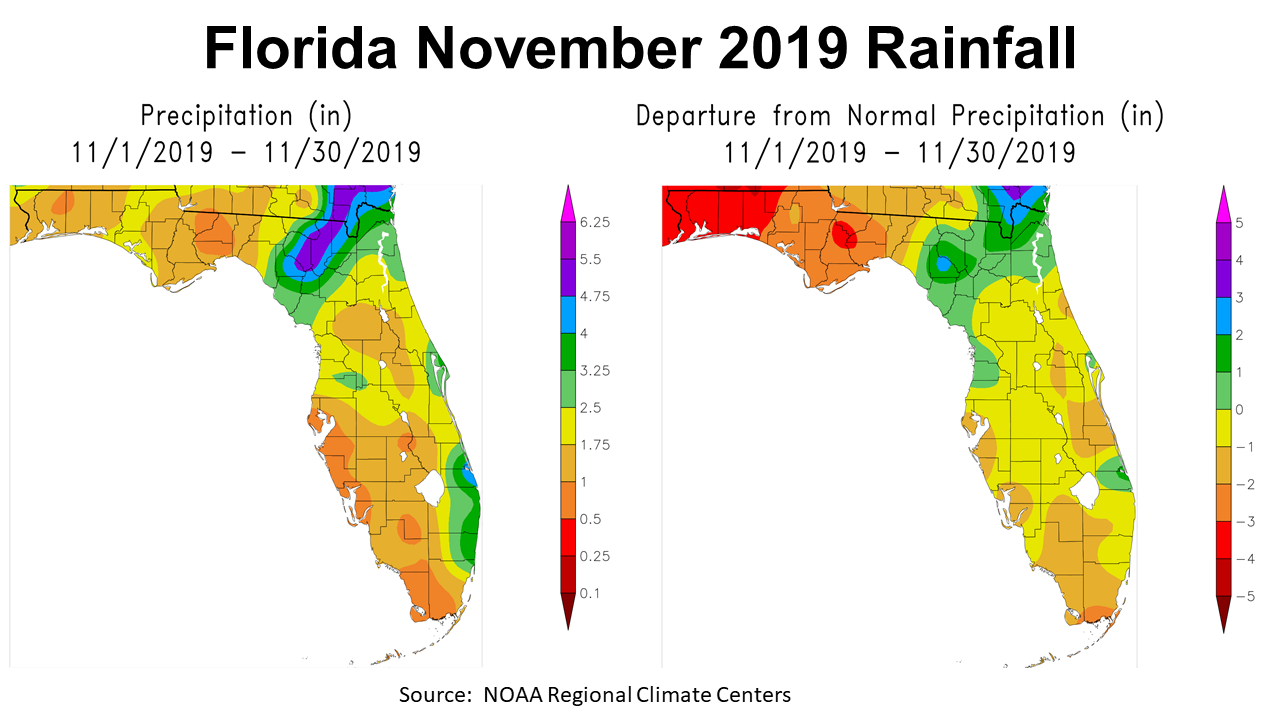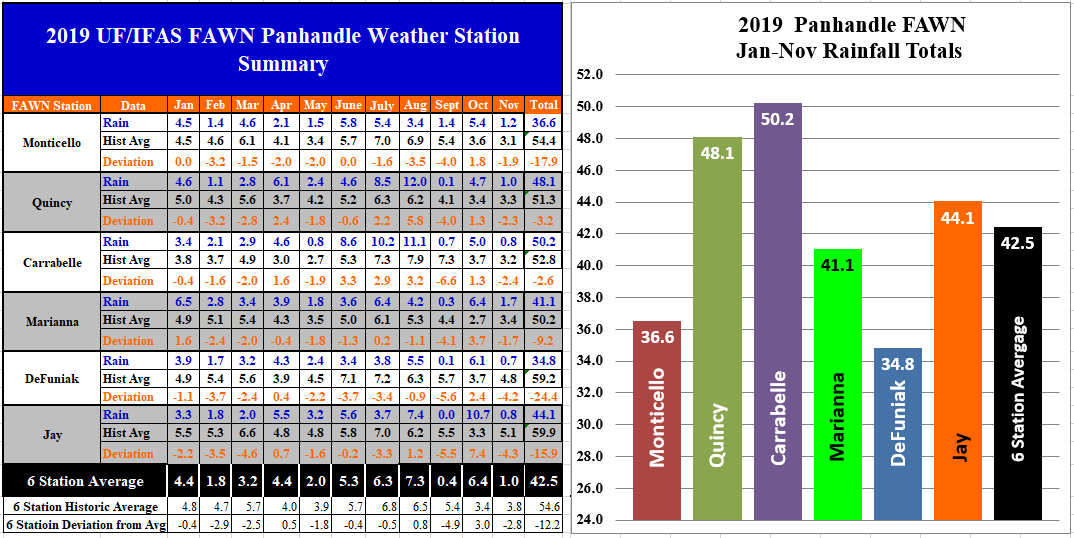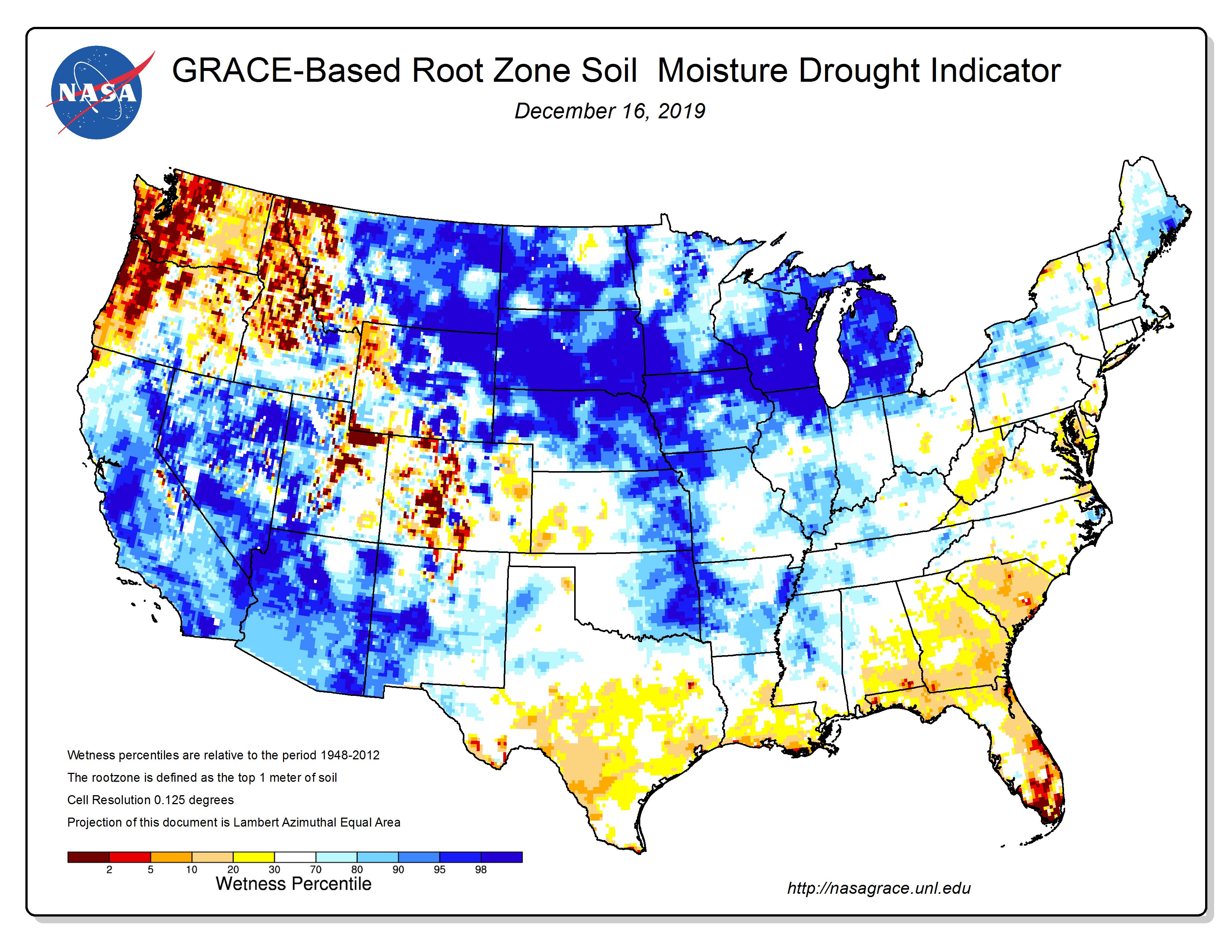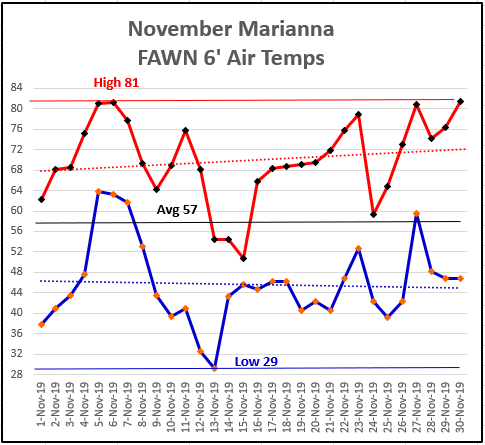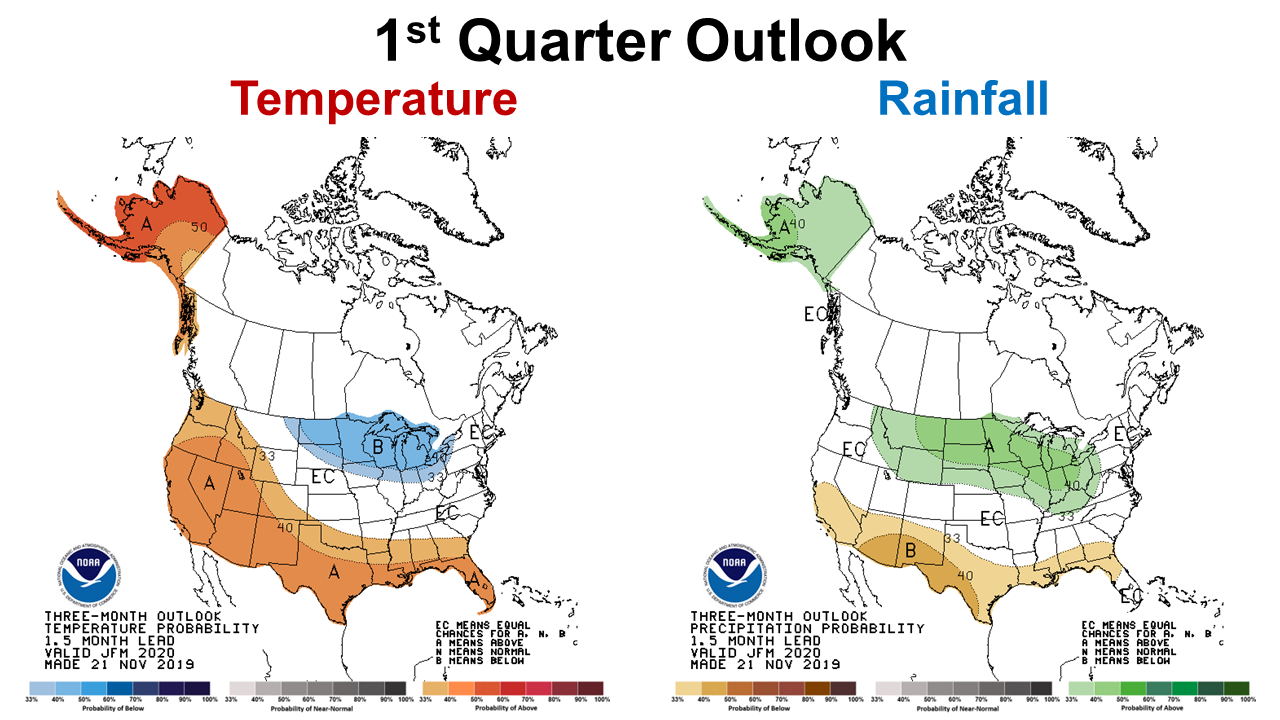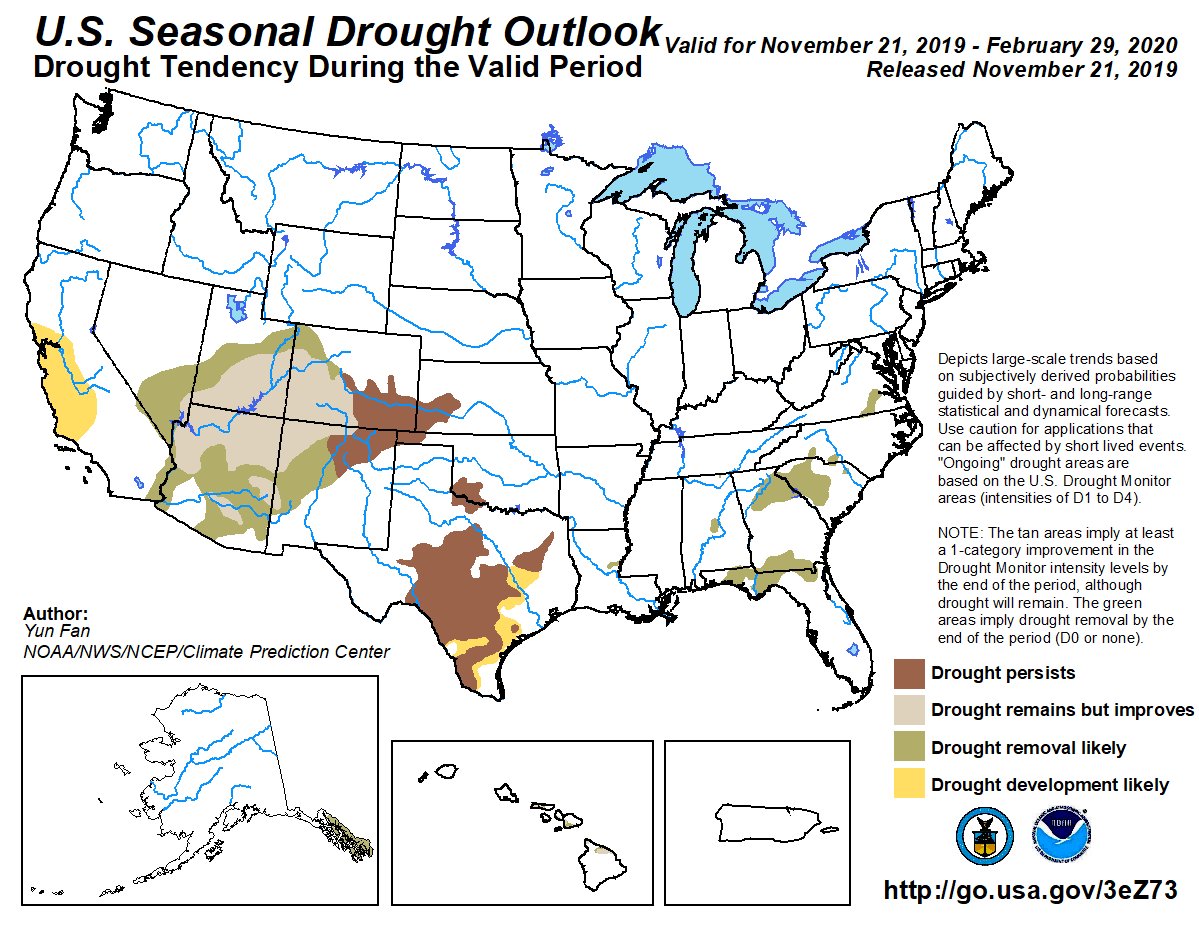Rainfall
November was yet another month of below average rainfall for the entire Panhandle. For the month, NOAA estimates range from 0.5-2.5″, which was 1-4″ below normal.
–
The six Florida Automated Weather Network (FAWN) stations reported rainfall for November ranged from 0.7″ in DeFuniak Springs, to 1.7″ in Marianna. All six stations were well below historic average, ranging from -1.7″ in Marianna to -4.3″ in Jay. The average for all six stations was 1.0″, which was 2.8″ below average for November. Annual totals thus far ranged from 34.8″ in DeFuniak (-24″) to 50.2″ in Carrabelle (-2.4″). The six station average through November was 42.5″, -12.2″ below normal for the region.
–
Drought
The most current Florida Drought Monitor shows that most of North and South Florida are either abnormally dry or in moderate drought. November and early December rainfall did not provide much improvement for the long-term drought this fall.
The NASA root zone soil moisture map shows how dry much of Florida has become at year’s end.
–
Temperatures
November temperatures ranged from a high of 81° on November 5,6, 27 & 30, and a low of 29° on November 13, 2019.
–
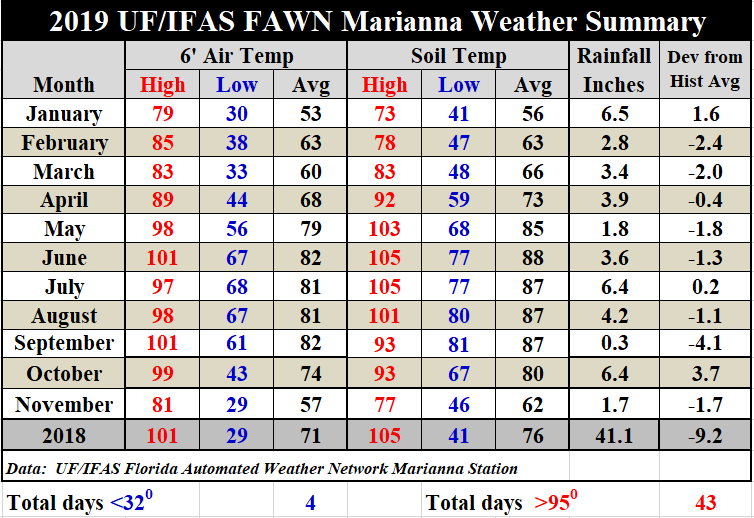 Interestingly, the 29° low on November 13th was the coldest day thus far in 2019, with a low of only 30° in January, and 33° in March. The average air temperature for November was 57° which was a drastic 17° change from October with a 74° average. Average soil temperatures cooled 18°, from 80° in October to only 62° in November.
Interestingly, the 29° low on November 13th was the coldest day thus far in 2019, with a low of only 30° in January, and 33° in March. The average air temperature for November was 57° which was a drastic 17° change from October with a 74° average. Average soil temperatures cooled 18°, from 80° in October to only 62° in November.
–
1st Quarter Outlook
The Climate Prediction Center (CPC) is forecasting the continuing of the general trend from the proceeding months of well above average temperatures and below average rainfall to continue through the first three months of 2020.
–
Interestingly though, the CPC is expecting drought removal for much of North Florida from December through February. These two maps represent slightly different time periods, so that could be part of the discrepancy. The winter months are generally a period with higher moisture, so perhaps this also plays into their drought outlook. At least this forecast offers some hope for improved planting moisture next spring.
According to the CPC, the ENSO phase is still neutral, so they are not expecting influence from an El Niño or La Niña in the months ahead. This has not changed from previous forecasts.
ENSO-neutral conditions are present. Equatorial sea surface temperatures (SSTs) are near-to-above average across most of the Pacific Ocean. The pattern of anomalous convection is generally consistent with ENSO-neutral. ENSO-neutral is favored during the Northern Hemisphere winter 2019-20 (70% chance), continuing through spring 2020 (~65% chance). Climate Prediction Center
–
So what does this all mean for farmers?
Neutral years are generally the ones with more extreme low temperatures, yet the CPC forecast is predicting well above average temperatures. Don’t view these long range outlooks the same as weekly weather forecasts. They predict trends, but there could still be some really cold nights ahead. November ranged from 29-81°, so there cold be a hard cold snap or two still to come this winter. The extended dry period may continue on for several more months, but may not be as noticeable with regular winter cold fronts. If cover crops have not already been planted, it is not too late. Preserving as much winter moisture as possible for spring planting could be really helpful, if the predicted drier than normal trend continues. (Read Dr. Mulvaney’s Cover Crops: A Low Cost Alternative to Irrigation, if you have not already). If the CPC is right, farmers may be able to take advantage of the well above average temperatures to plant a little earlier next season, when there is more moisture for seed germination.
In the end 2019 was not a great weather year for farming, but let’s at least be grateful that no major hurricanes hit the region this year. As you hang up your new 2020 calendars, there is always the hope a new year brings. For now, enjoy Christmas with your families, and stay tuned to see what 2020 brings.

